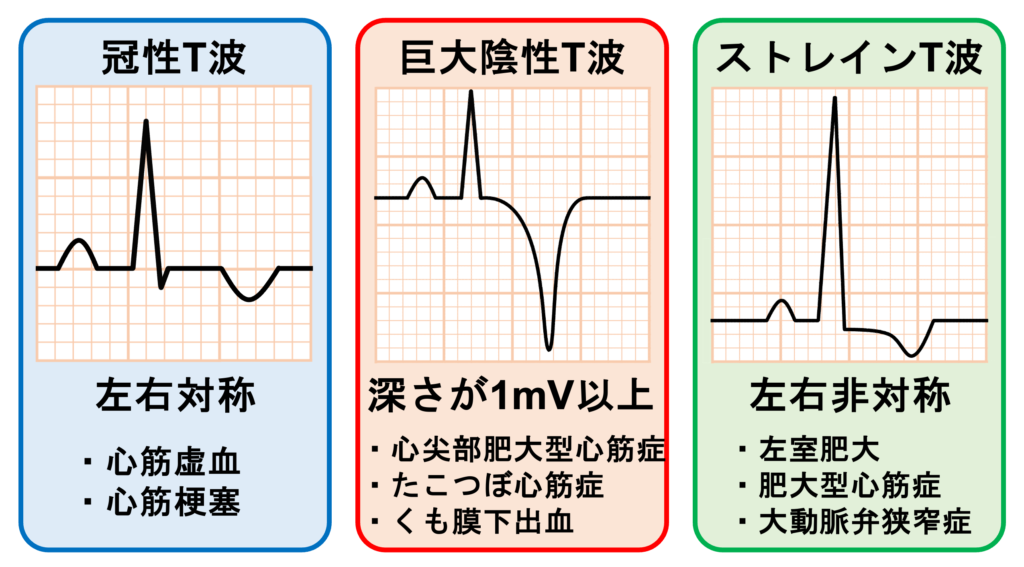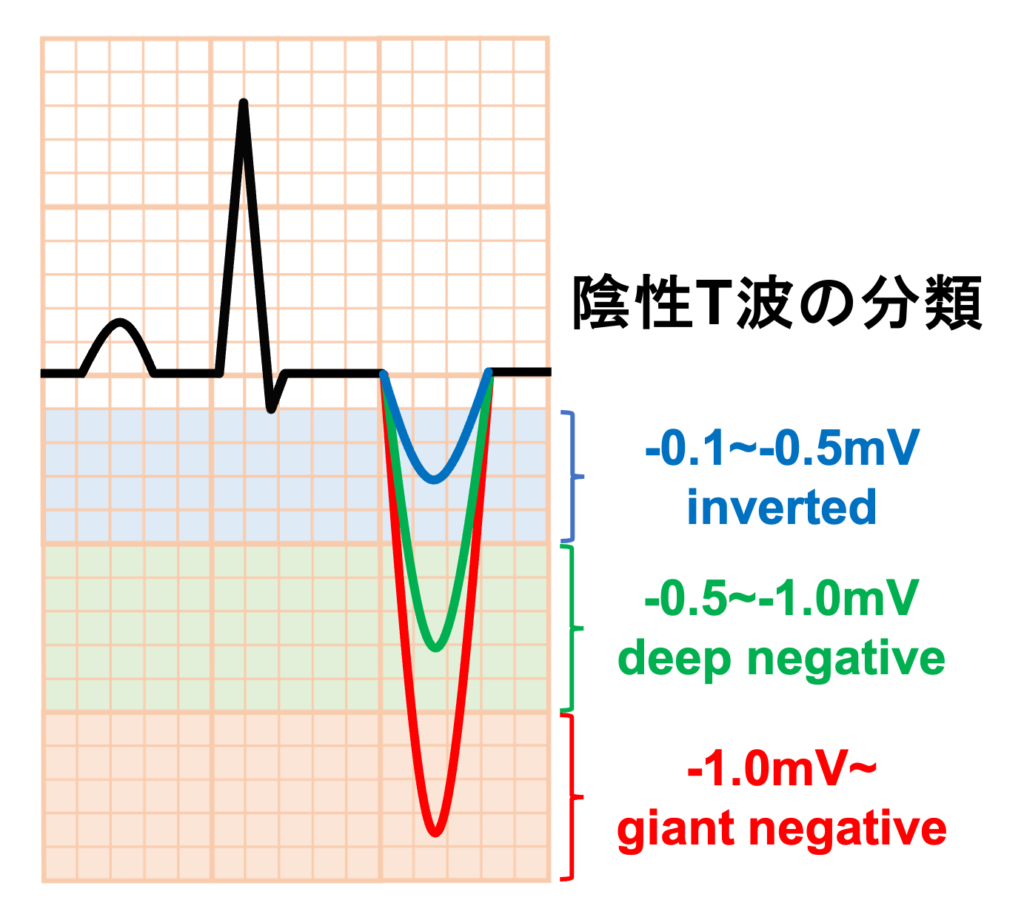陰性T波(negative T wave)

健常人でもⅢ、aVF、V1誘導ではT波の陰転化がみられることがあります。そのため、Ⅰ、Ⅱ、aVL、V2~V6誘導でT波の陰転化が認められた場合に有意な所見と判断します1)。
陰性T波の違い
形による違い

冠性T波
冠性T波とは、心筋虚血などで認められる左右対称の陰性T波のことです。冠動脈疾患でよく見られることから冠性と名付けられています。
巨大陰性T波
振幅が1mV以上の左右対称の陰性T波を巨大陰性T波と呼びます。心尖部肥大型心筋症、たこつぼ症候群、くも膜下出血などで生じます。
ストレインT波
ストレインT波は非対称性の陰性T波であり、主に左室肥大を生じる疾患で見られる変化です。
深さによる違い
陰性T波を定量的に評価するために深さで分類する方法が提唱されています1)。-0.1〜-0.5mVをinverted T wave、-0.5〜-1.0mVをdeep negative T wave、-1.0mV〜をgiant negative T waveに分類します。ちなみにこの分類では0.1〜-0.1mVはflat T waveに分類されます。

年齢による違い
通常8歳頃までの正常な小児の心電図では右側胸部誘導のT波は陰性であり、これをJuvenile T waveと呼びます。


